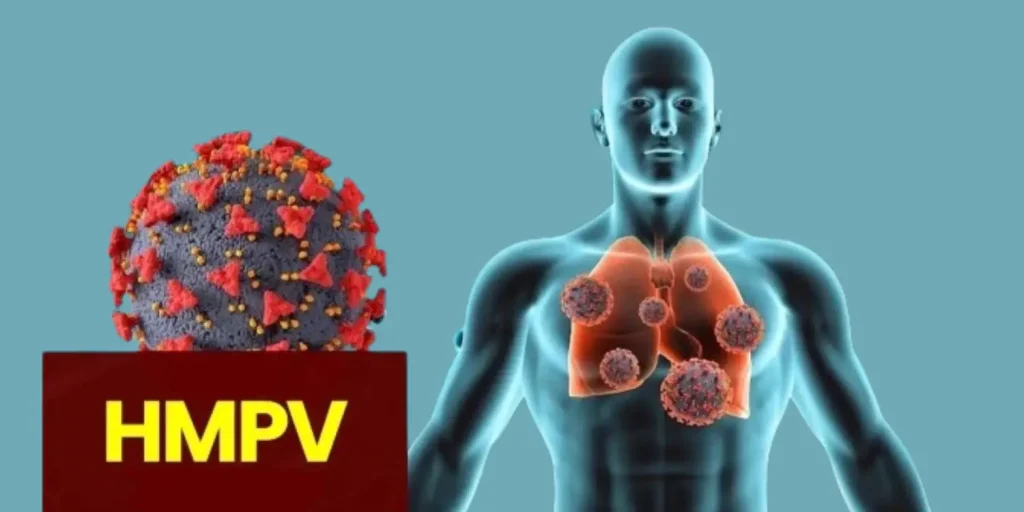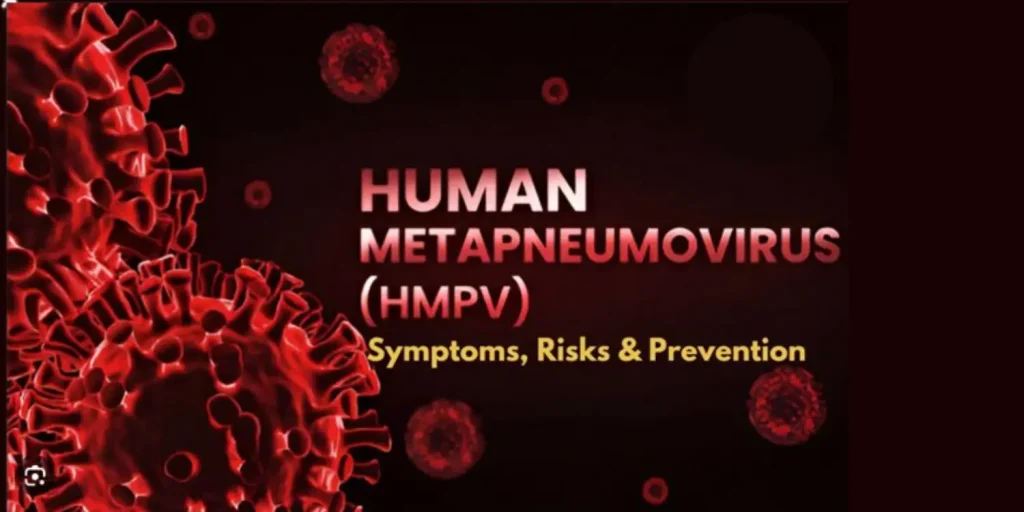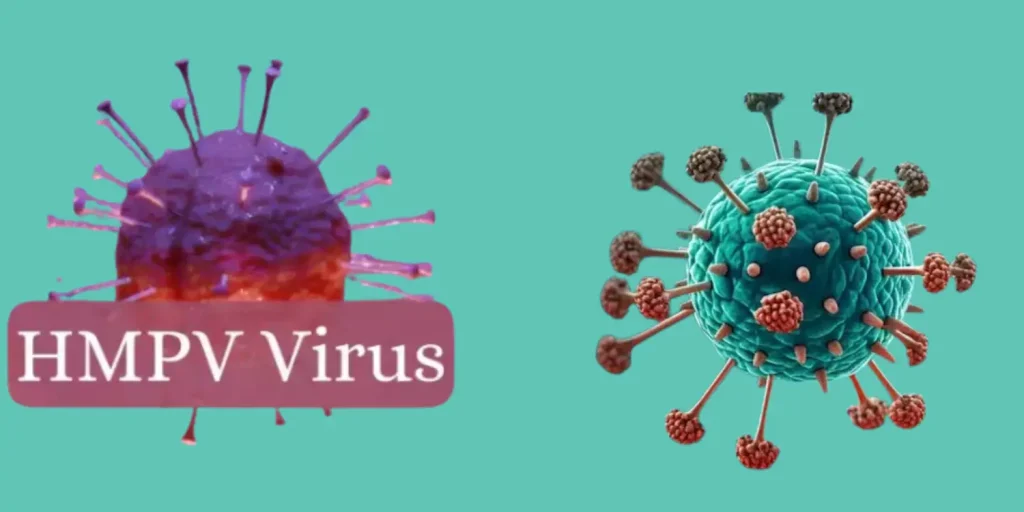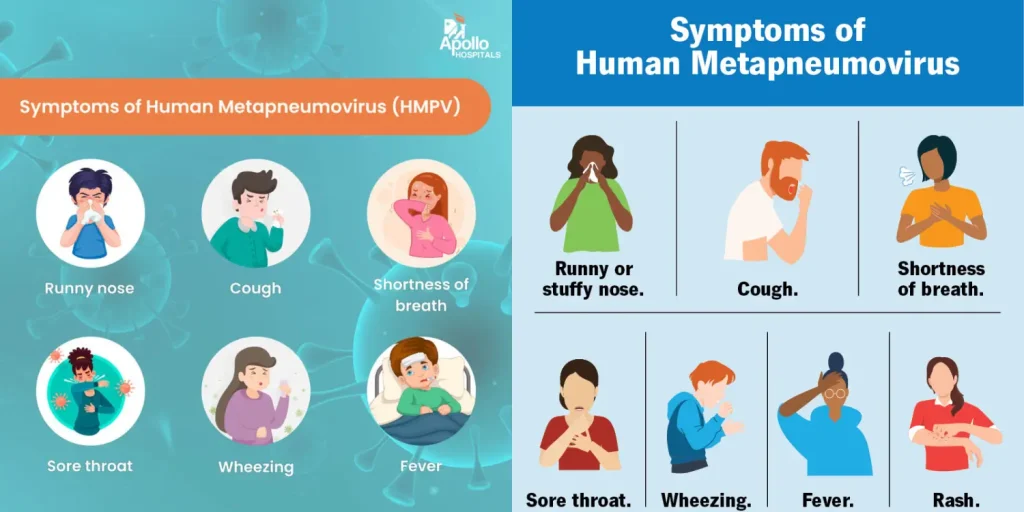What is this topic: HMPV Viras Disease Introduction?
HMPV Viras Disease is an acuteors, respiratory tract infection which is caused by the Human Metapneumovirus (HMPV). Like other respiratory tract infections which are ordinary flu and colds and other flu like illnesses. Like most of the flu viruses, HMPV Viras Disease is common during the winter season. They can lead to serious respiratory diseases, for instance severe complication in childhood, the elderly and the immuno-compromised. Symptoms of this HMPV Viras Disease and its complications can only be managed if this virus is identified early enough.
It is highly contagious mainly secretions and may consider the multipliers infected within a short period in congested or inadequate ventilation areas. More information on how HMPV Viras transmit and acquainting oneself with symptoms exhibited by the disease is very vital in preventing their future spread and management.

What is HMPV Viras disease?
HMPV Viras disease is caused by Human Metapneumovirus, a new generation virus belonging to respiratory system that affects the lungs and airways. This virus is relatively new and emerged in the late century belonging to the family Paramyxoviridae and from the same genus of respiratory syncytial virus (RSV). That is why HMPV Viras disease begins with the signs of a cold, such as runny nose, cough and fever. It can also progress into something more serious such as bronchiolitis or pneumonia especially during infancy, in the elderly as well as individuals with a weakened immune system.
So easily spreads since it is spread through saliva droplets that comes from an infected individual during talking, coughing or sneezing. Symptoms of HMPV Viras disease usually manifest after several days of contraction of the virus, and although most patients do not require medical attention, patients with other diseases become hospitalized. Therefore, the objective of this paper is to maximize knowledge on HMPV Viras disease for early diagnosis and management.
How is HMPV Viras spread?
HMPV Viras is transmitted through droplets; talking, coughing or sneezing by an affected individual. These droplets can land on objects that human touches as he or she spreads the virus from the hand. For instance, molecular data confirms that samples of water can contain HMPV Viras, while people who already have a disease can transmit the HMP through a handshake or touching their face. This virus is highly contagious particularly when people are closely packed like in school, hospitals or nursing homes.
HMPV Viras disease affects man through contact therefore one can control the spread by washing hands frequently and this should also make an individual avoid contact mouth while coughing or sneezing. However, beside such intimate contact, the virus was also proven to live on surfaces for up to three hours and thereby maybe a cause for swapping the virus. That means, by learning the way through which HMPV Viras spreads and how it affects the public, outbreaks can be controlled resulting to protection of public health.

What does the management of HMPV virus involve in relation to its symptoms?
HMPV Viras disease resembles flu like symptoms patients presenting would require the doctors opinion though the symptoms are not more severe than a common flu but may range from being petty severe. Some of the possible manifestation include sneezing, sore throat, cough and fever. Some may still have a cough or breathlessness especially when infected early before their body developed a immunity to the disease or young ones and old people. In complicated situations HMPV Viras can affect the lungs and develop a childhood disease bronchiolitis or pneumonia in immunocompromised patients.
The others are tired feeling and body ache. Primary symptoms may take between 3 and 5 days to show after coming into contact with the virus in question. As for the majority of individuals self-limiting, attention should be paid to this deterioration. Symptoms which can get worse or lead to breathing issues should be taken to a doctor as soon as possible. In conclusion, one and out knowledge of signs for HMPV Viras disease helps in early diagnosis of the disease and early treatment as early as possible, if at all possible.
Is HMPV Viras contagious?
Yes and the HMPV Viras disease is partly contagious from one person to another. Mainly, it passes through saliva from the mouth and nose when an infected person speaks, coughs, or sneezes. These droplets can then falling on surfaces so that the virus remains infectious for several hours, thus making more people to get infected through HMPV Viras. Kindness including hugging or even a hand shake also does it. In addition, in some enclosed places or where no proper air circulation, viral transmission will occur in such places as; school, health facilities or in a bus.
Patient with HMPV Viras disease are most infected when he/she has not even started having symptom of the disease but in the first one or tw0 days this he/she is most infectious. Preventive measures include regular washing of hands; avoiding contact with face, mouth or nose with hands that have not been washed; handling respiratory problems with tissue or elbow, and not going to workplace or school if one is sick.

Un siegtam–HMPV Viras Disease: What is the way to manage it?
Currently, there is no known antiviral drug that can be used to cure Viras HMPV disease at the time of preparing this report. They are referred to as palliative because treatment entails the management of the disease in a manner that enhances the patients wellbeing. Pain together with fever can be treated by the use of analgesics and appropriate bed rest. Cold and flu include signs like cough and congestion and a decongestant and cough medicine may work. As for other measures connected with rest it is also crucial to mention that the major thing assisting muscles restoration is the water consumption.
If complications are noted the child may progress to bronchiolitis or pneumonia with a subsequent need for hospitalization or oxygen or ventilation. People with health-compromising diseases or situations will need more intensive interventions and are more vulnerable for developping side effects of the virus. HMPV Viras disease is an easy to cure disease which does not require treatment most of the time, however, this should be treated early enough to prevent worsening of the disease.
To which categories of people is HMPV Viras most prone to affect?
HMPV Viras disease as observed on children can affect anyone, but there are certain groups of people that are at high risk of developing severe illness. Some of the worst affected groups include the young, children, the old and those whose immune systems are weakened. Infants especially those below one year are more vulnerable for severe respiratory diseases such as bronchiolitis or pneumonia. Other which may prone include the older persons, persons with known systemic, acute or chronic diseases like, Chronic Respiratory Diseases or diabetes, heart complications among others.
Cancer patients, or those with organ transplants, expose themselves to the sickness, and are predisposed to contracting complications from HMPV Viras. These conditions-static, immunocompromised and infants-mean that newborns and others in these high risk categories should opt for early treatment if they come into contact with or exhibit the signs in the HMPV Viras season which starts in the cold season.

Can HMPV Viras be prevented?
Currently there are no available measures for prevention of HMPV Viras disease; however, even though there is no specific vaccination against HMPV Viras disease certain general measures to avoid getting this disease are taken. The only way to avoid the transmission of HMPV Viras is through personal sanitation and cleanliness. This should serve to remove virus from the hand through washing hence reducing its chances of reaching respiratory system after hand washing with soap and water. Mortality can be reduced by covering the mouth and face every time a person is coughing or sneezing and avoiding contact with such a person.
Other activities, which should be performed, are regular cleaning of the teeth, washing hands, using antibiotics; disinfecting the doorknob, telephone, keyboards and other frequently touched objects. The following extra steps should therefore be taken especially in high risk areas including the hospitals: facemasks, gloves. While these can reduce chances of spreading of HMPV Viras the best way of ensuring that other people do not get infected is getting sick at home.
How dangerous is HMPV Viras?
In general it may be well said that HMPV Viras disease is not deadly to most of the people but deadly if infects populace. In infant, the elderly and other immunocompromised persons, it will cause respiratory illnesses such as pneumonia or bronchiolitis. Those diseases can put people in these vulnerable populations to the hospital, and often need aggressive intervention including oxygen or mechanical ventilation if the case is HMPV Viras disease. Altho0ugh it is not lethal and does not result to death in any way, it has complications that are serious if not treated.
Hence, favourable outcomes can be prevented by treating the early progression of the disease through retirment care. It is also easily transferrable and hence can cause epidemic within a large noisy population, schools and nursing homes according to researchers. This implies that preventing measures need to be taken, to minimize the chances of many people being affected.

What is the leading to HMPV Viras disease?
VIRAS Hematological disease called Viras disease is caused by a virus known as Human Metapneumovirus or HMPV and falls under Paramyxoviridae family. The symptoms include flu like and it affects the respiratory system, although it’s referred to as a flu virus. It mostly impacts the upper and lower airway thus(Node) leading to inflammation and congestion amongst the others. HMPV Viras is airborne through conjoint coughing and sneezing and may be contacted by touching infected items. Although in normal population the virus fails to give severe manifestations it may lead to bronchiolitis or pneumonia in the susceptible group.
HMPV Viras largely infect in winter and excellently transmitted in school and healthcare center. When understanding the cause of HMPV Viras disease it provides a good foundation in practicing the best preventive measures as well as preventing further occurrence of the disease.
Or maybe there is a vaccine for HMPV Viras Oh pity Oh shame
This is only to an extent, because, to this date, there has been no developed vaccine to combat HMPV Viras disease. Like most respiratory viruses including the respiratory syncytial virus (RSV), no vaccine for the virus has to date been manufactured and commercially available. The authorities are investigating possible vaccines and means to cure the influenza, yet currently there are two primary methods of prevention: having washbasins and providing guidelines of how best to avoid contact with infected persons. At the present time no protection against
HMPV Viras in form of vaccine has been developed; hence the health of people should be built in other ways. In such high risk individuals, such as infants, elderly, and immunocompromised, it should be prevented or treated early. In the future, utilization of the vaccine may reduce significantly the incidences of HMPV Viras disease and its severities and afford man a chance on protection from viral diseases.

HMPV Viras Disease Conclusion?
Therefore, HMPV Viras disease is an acute respiratory disease due to infection with HMPV in the upper and lower respiratory tracts. While most normal growing babies do not need medical attention severe cases can cause pneumonia and bronchiolitis in the vulnerable group which is the infants, the elderly and the immunocompromised. As of now, there is no known immunization against HMPV Viras but washing of frequented surfaces, avoiding close contact with people infected with the said virus and cleanliness in general are effective preventive measures for the virus.
Symptoms are no significant, but the appearance of this disease at a young age can be very dangerous; its diagnosis and treatment are possible. It is the intention of this paper to share the knowledge that is required with regards to the triggers, mode of spread and strategies of avoiding HMPV Viras disease. future research is expected to help to develop better vaccines and play as long-lasting cure to counter HMPV Viras disease.